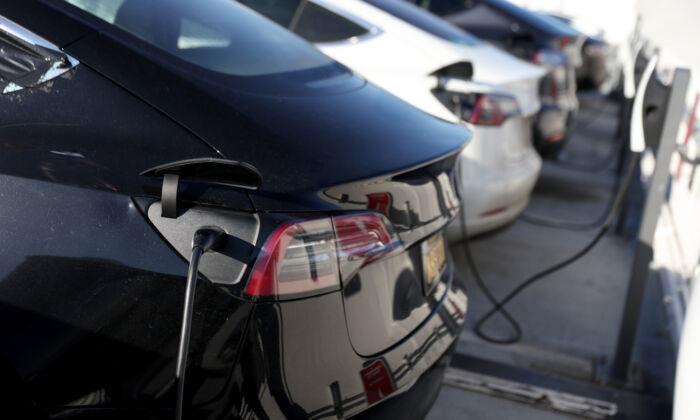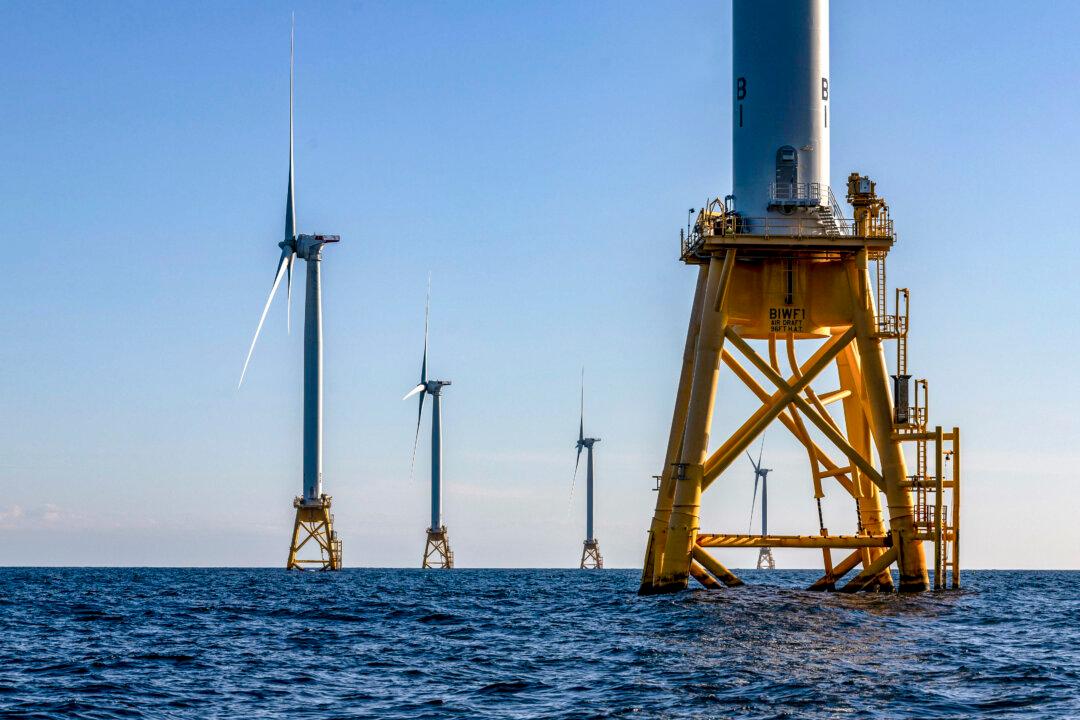Oregon has joined a list of more than a dozen states vowing to follow California’s lead in banning the sale of new gas-powered vehicles by 2035.
The move comes as California urges residents to not charge their electric vehicles during a heatwave to avoid straining the electrical grid.
An Oregon Department of Environmental Quality advisory committee is now in the process of creating what it calls “Advanced Clean Cars II Rules,” which will guide the state toward that new goal.
California announced on Aug. 24 that it would begin to phase out gas-powered vehicles beginning in 2026, when 35 percent of all passenger vehicles and light duty trucks sold in the state must be zero-emission vehicles (ZEVs).

With an anticipated increase of nearly 8 percent annually, the state has vowed that 100 percent of all vehicles sold in California will be ZEVs by 2035.
Oregon aims to follow suit.
“The transportation sector accounts for more than 40 percent of Oregon’s greenhouse gas emissions,” the Oregon Department of Energy said in a statement. “Moving to cleaner, alternative fuel transportation options, like zero-emission vehicles, can reduce those harmful Green House Gases (GHGs) and help Oregon reach its climate goals.”
Oregon had already been working toward a goal set by its legislature in 2019 to have 250,000 registered ZEVs in the state by 2025.
As of April, there were approximately 50,000 ZEVs on Oregon roads, falling well short of the pace to meet that goal in the first three years.
“We’re committed to getting more electric vehicles [EVs] on Oregon’s roads and 50,000 registered EVs is a major milestone,” said Amanda Pietz, administrator of the Oregon Department of Transportation’s Climate Office. “EVs make up about 8 percent of new cars, trucks, and SUVs sold in Oregon, and we’ll support that growing market through partnerships to build out EV charging stations along major roads and in Oregon’s communities.”
The state will also “support” that market by banning gas-powered vehicles and using taxpayer-funded subsidies to prime the pump.
Oregon offers as much as $7,500 in taxpayer-funded rebates on top of the federal tax credit of $7,500 toward the purchase of a ZEV. Utilities in the state are offering additional rebates of up to $1,500 for a vehicle purchase and up to $1,000 to install a residential home charger or workplace-commercial charging station.
The Go Electric Oregon website encourages buyers to “stack” government incentives to obtain more than $16,500 to use for the purchase of a ZEV.
According to Oregon Public Broadcasting, taxpayers have already subsidized the purchase of electric vehicles (at an average cost of $66,000) to the tune of $55 million.
One 2018 estimate puts the average income of an electric vehicle driver at $150,000 compared to the U.S. average of $63,000.
In May, the Oregon Department of Transportation committed to spending $100 million in federal and state funds over the next five years to expand Oregon’s EV charging infrastructure.
The transition to ZEVs seems to overlook increasing concern over their environmental impact and national security implications.
Making ZEV batteries requires the use of fossil fuels to process ore and extract minerals, including lithium, cobalt, nickel, copper, and graphite. They also require steel, aluminum, plastic, and other materials. The extraction and processing of these minerals are dominated by China and the Democratic Republic of Congo.
According to Bloomberg, China controls 80 percent of the market for EV batteries.
The push to convert to ZEVs will also create challenges to the electrical grid.
In a 2018 analysis, energy economists at the University of Texas found that if California drivers were to go fully electric overnight, the state would need about 47 percent more electricity than it currently consumes. All the states that follow California’s emission standards will face similar challenges.
But California’s electrical grid is already strained and Oregon’s faces uncertainty.
With a heatwave looming, California’s grid operator issued an alert on Aug. 31, urging residents to avoid using large appliances and charging electric vehicles between 4 p.m. and 9 p.m. over the Labor Day weekend.
“Lowering electricity use during that time will ease strain on the system, and prevent more drastic measures, including rotating power outages,” the alert reads.
Oregon Gov. Kate Brown has supported removing or breaching the Lower Snake River Dams to protect fish populations.
Carbon-free hydropower from dams makes up 45 percent of the electricity used in Oregon.





